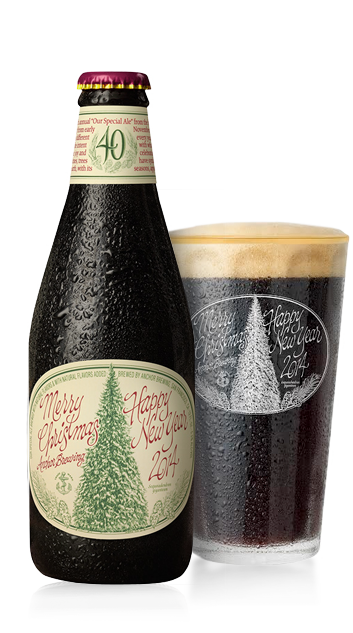Start 14-Day Trial Subscription
*No credit card required

What Makes a Christmas Beer?
Balance and approachability form key goals in the production of an outstanding winter seasonal beer. Malt notes, special ingredients, any spices and underlying hops should work together in the creation of harmonious and appealing aroma and flavor profiles. Imagine a Christmas beer that's too syrupy and cloying or a spiced ale with an overload of nutmeg or cinnamon. Too much of any one component can be overwhelming and detrimental to the beer's overall appeal.
Winter ales should also deliver the aromas and flavors that are listed on the label. If the holiday beer claims to be based on a classic style, then the classic style should come through and not be smothered by special ingredients. If the beer is made with Belgian yeast, a pleasant, fruity, Belgian ester character should be present, alongside any fruit or spices. If the ale contains juniper, one should definitely pick up a light balance of this character in the nose and on the tongue.
 A classic American example that began in 1975, Anchor Christmas (a.k.a. "Our Special Ale") is known for its distinctive labels that have been hand drawn by the same artist since 1975 and showcase a different tree species each year. The recipe of this fascinating ale varies from year to year but always includes an appealing balance of dark malts, interesting hops and hints of spice and piney resins. Even though the beer's alcohol content comes in at moderate levels, some aficionados insist on cellaring bottles for years, often with surprisingly interesting results.
A classic American example that began in 1975, Anchor Christmas (a.k.a. "Our Special Ale") is known for its distinctive labels that have been hand drawn by the same artist since 1975 and showcase a different tree species each year. The recipe of this fascinating ale varies from year to year but always includes an appealing balance of dark malts, interesting hops and hints of spice and piney resins. Even though the beer's alcohol content comes in at moderate levels, some aficionados insist on cellaring bottles for years, often with surprisingly interesting results.
Anchor Christmas (a.k.a. "Our Special Ale") is a classic American example of a Winter Ale.
Just a few of the many American winter ales worthy of sniffing and sipping include the piney, ruby-colored Deschutes Jubelale that comes wrapped in artsy, winter-themed labels; Lost Abbey Gift of the Magi strong golden ale made with Frankincense and Myrrh; SweetWater Festive dark ale spiced with cinnamon and mace; and Heavy Seas Yule Tide - a rum barrel-aged, boozy ale that changes style with each annual release.
With a few hopped-up exceptions such as Sierra Nevada Celebration Ale and BrewDog Hoppy Christmas, winter seasonals tend to exhibit malty, sweet profiles with subdued hop presence. Warming alcohol usually imparts pleasing palate notes and a viscous, piquant, satisfying finish in many examples.
As mentioned earlier, Christmas beers made in the UK tend to leave out spices but include higher levels of malt, body and alcohol than standard, sessionable pub ales. These stronger brews are usually bottled and consumed during social gatherings and celebrations during the colder months. Most pub regulars in the UK would balk at the idea of ordering an imperial pint of 7% ABV winter beer, but splitting a 16-ounce bottle between friends on a frigid evening makes perfect sense.



